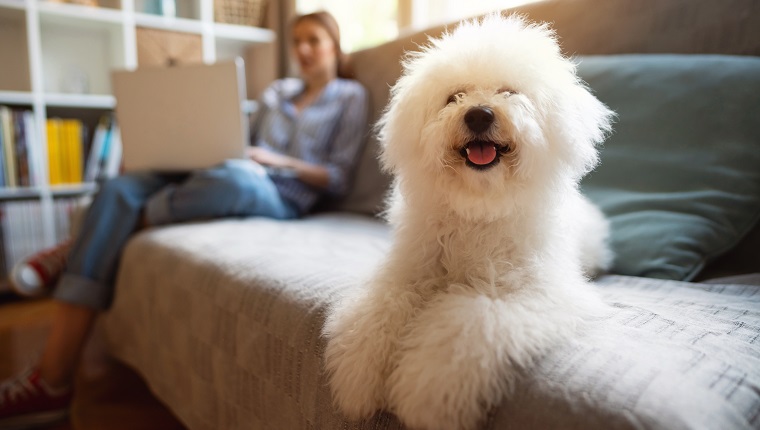21 Dog Breeds Who Shed The Least
-
Affenpinscher
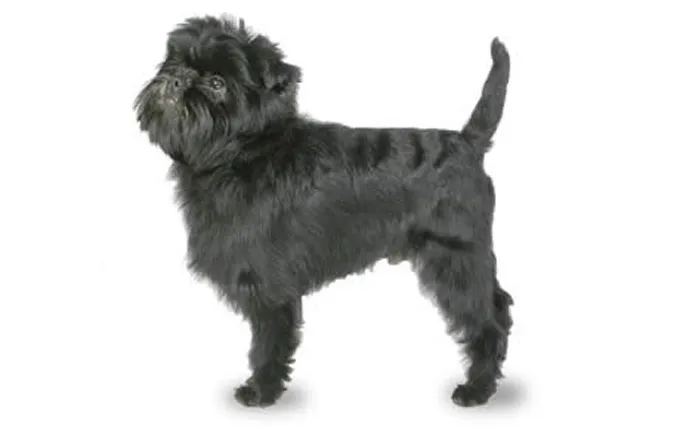
(Picture Credit: Shutterstock)
Shaggy but neat describes the Affenpinscher's desired appearance. They have a thick, rough coat with a harsh texture, approximately one inch long on the body, shorter on the rump and tail, and longer and shaggier on the head (where it contributes to the monkeylike expression), neck, chest, stomach, and legs.
Affens don't shed much, but their rough coat must be stripped to maintain its characteristic texture.
-
Airedale Terrier
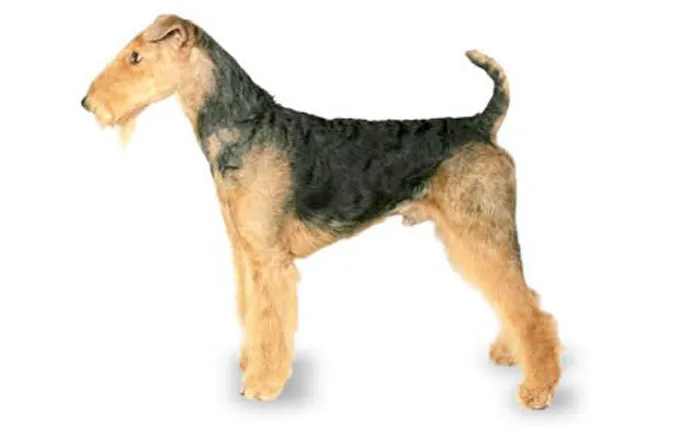
(Picture Credit: Shutterstock)
The handsome coat of the Airedale Terrier has two layers: a topcoat, which is dense and wiry, and an undercoat, which is short and soft.
The Airedale Terrier is not known for extreme shedding, but they do shed at certain times of the year. Regular brushing keeps the coat in good condition (once or twice a week), and periodic bathing as needed.
-
Bedlington Terrier
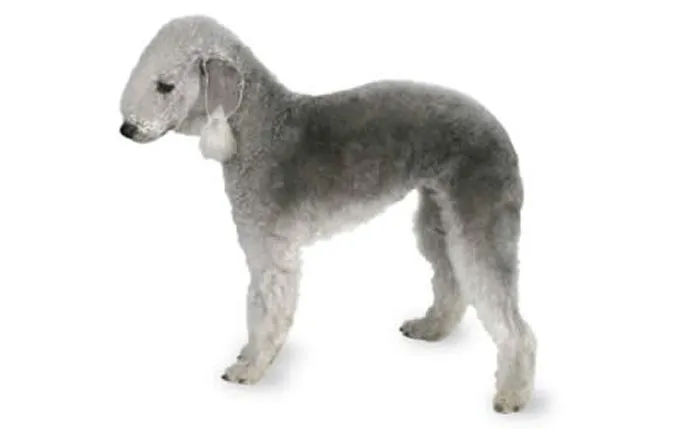
(Picture Credit: Shutterstock)
The Bedlington's distinctive coat is an unusual combination of harsh and soft hair. It feels crisp but not wiry and has a tendency to curl, especially on the head and face. It doesn't shed much.
Unlike many terrier breeds, the Bedlington's coat doesn't need to be stripped. You'll need to comb them at least once a week.
-
Bichon Frise
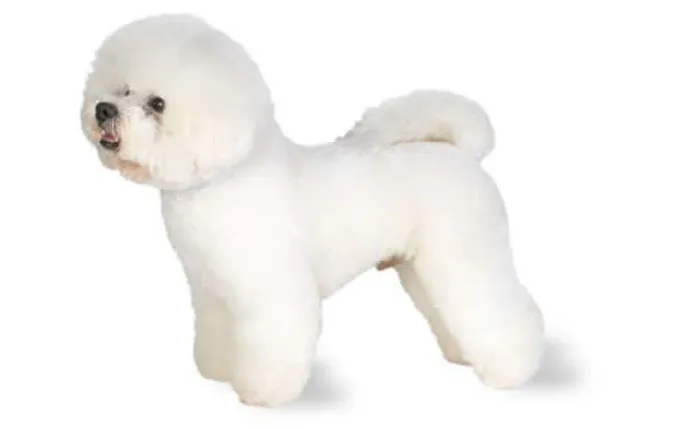
(Picture Credit: Shutterstock)
The Bichon Frise is a double-coated breed, always white. The soft and dense undercoat and course outer coat combine to create a soft but substantial texture. The coat stands away from the body, giving it a powder-puff appearance.
Bichons have a reputation for not shedding, which isn't exactly true. All creatures with hair shed at least a little. With double-coated Bichons, however, the shed hair is caught up in the undercoat instead of falling to the floor. If this dead hair isn't removed by brushing or combing, it can form mats and tangles, which can lead to skin problems if left unattended.
-
Border Terrier
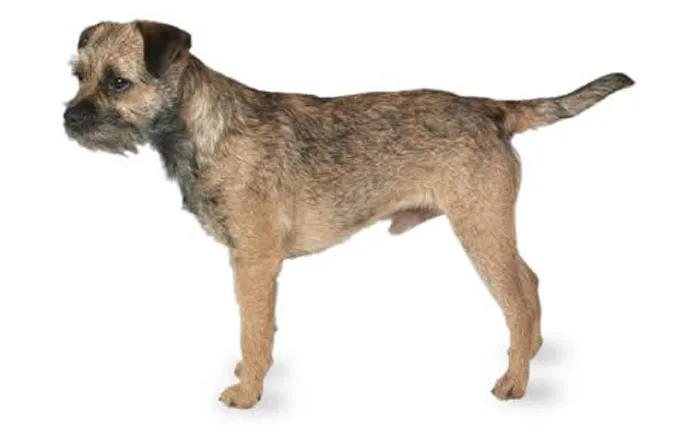
(Picture Credit: Shutterstock)
The Border Terrier has a short, dense undercoat covered with a wiry topcoat.
Weekly brushing and periodic stripping (every five to six months) of the rough terrier coat will keep your Border looking neat and tidy.
Stripping involves plucking the dead hair by hand or removing it with a stripping knife or other stripping tool. It's the kind of thing you can do while you and your Border are watching a 30-minute television show. You'll find that by stripping the coat, you'll have less Border hair decorating your clothing, furniture, and flooring.
If you don't mind the scruffy look, you can just leave the coat as is, with no stripping or clipping, but the coat may shed more.
-
Chinese Crested
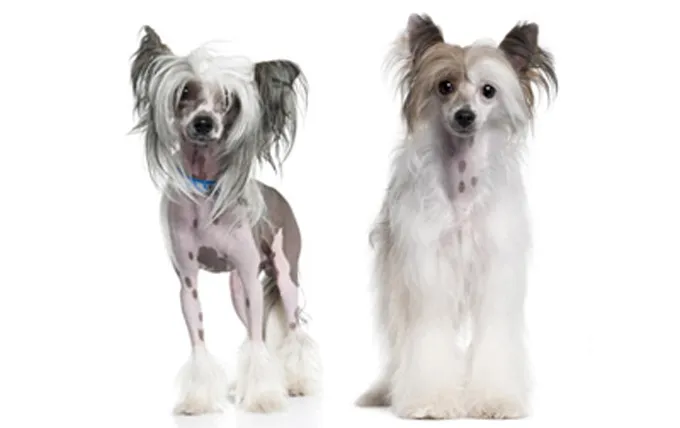
(Picture Credit: Shutterstock)
The Hairless Chinese Crested is bald except for soft, flowing hair on the head, feet, and tail. Because they can be prone to minor skin problems, such as acne, check for any blackheads while grooming.
Powderpuff Cresteds are a lot of work to groom. They have a silky double coat, and the undercoat is copious and will mat if the dog isn't groomed regularly. The Powderpuff needs to be brushed weekly, except when the puppy hair is changing into adult hair, during which brushing is best done on a daily basis.
-
Chinese Shar Pei
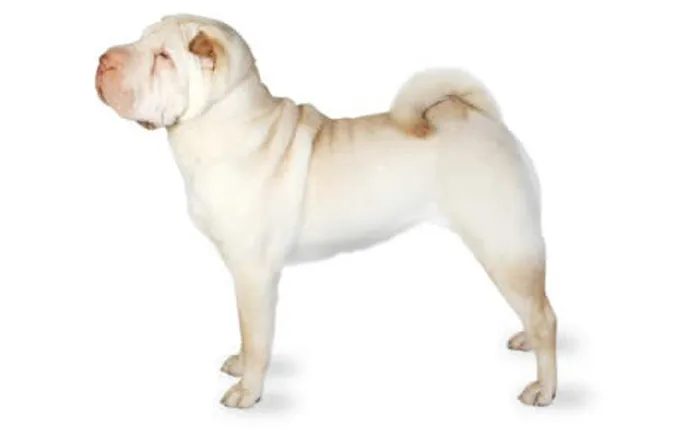
(Picture Credit: Shutterstock)
While the Shar-Pei is a naturally clean dog with very little odor, they need only a little grooming to keep them looking good. A thorough brushing once a week with a rubber curry or grooming mitt is sufficient to remove dead hair and dirt. They doesn't need to be bathed a lot, about every twelve weeks if they haven't been rolling in the mud.
The difficult, but essential, part of grooming is getting them dry after a bath. If you don't dry the folds and wrinkles completely, you can expect a yeast or fungal infection. Wipe thoroughly between the folds with a dry towel to eliminate all moisture.
-
Coton De Tulear
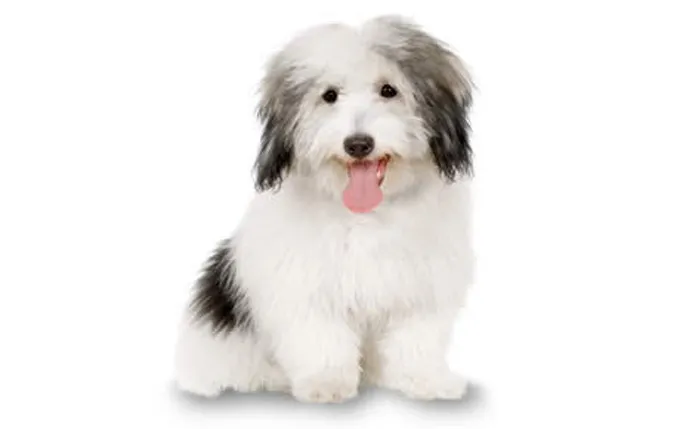
(Picture Credit: Shutterstock)
The Coton's coat is long, soft, and thick, with what can only be described as a fluffy, cottony texture. By adulthood, it's usually four inches long.
Cotons shed little, mainly in the spring. They're often recommended for people with allergies.
To prevent matted fur, brush the coat three or four times a week with a pin brush that has uncoated metal pins.
The more often you brush, the less frequently you'll have to bathe them. You can also keep their coat in a short puppy clip for easier care.
-
Greyhound

(Picture Credit: Shutterstock)
Greyhounds have a short, smooth coat that's easy to care for. Despite their short coat, Greyhounds do shed a bit.
Brush them daily to keep shedding at a manageable level. Your Greyhound will love being massaged with a rubber curry brush, also known as a hound mitt.
-
Ibizan Hound Dog
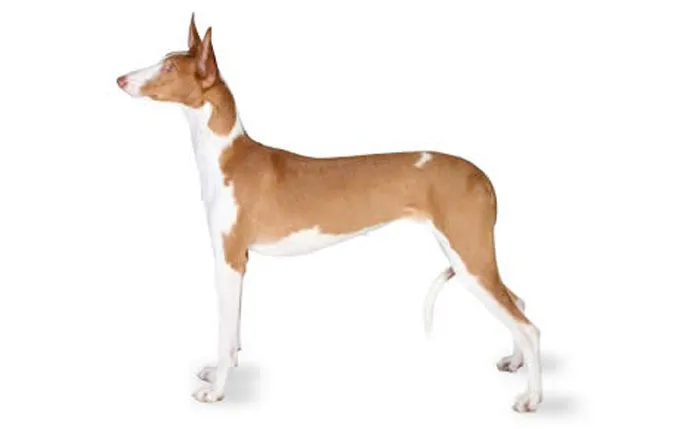
(Picture Credit: Shutterstock)
The Ibizan Hound can have a coat that's shorthaired or wirehaired. The wirehaired coat can be one to three inches long, with the longest hair on the back, the back of the thighs, and the tail. Whether they have a short or wire coat, the Beezer's hair is hard to the touch.
It's easy to groom an Ibizan, no matter which type of coat they have. Brush them weekly to remove loose hair and keep their coat shiny and skin healthy. You can brush them more often if you want to reduce the amount of hair they shed.
-
Komondor
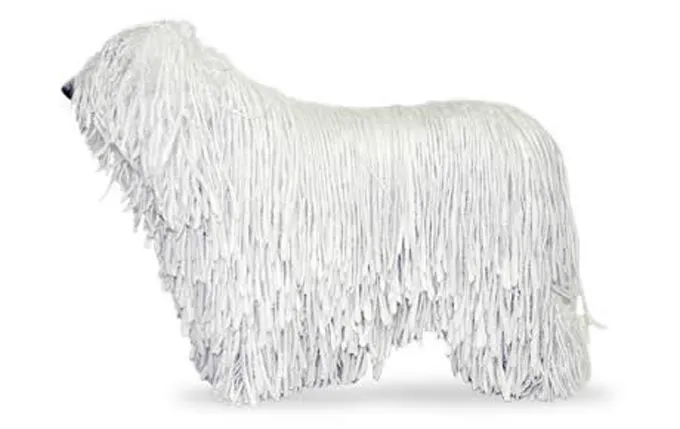
(Picture Credit: Shutterstock)
The Komondor has a wonderfully unique coat. During puppyhood, they have soft curls that grow heavy as they mature, developing into long, feltlike cords that resemble the strands of a mop. The undercoat is soft and woolly, the topcoat coarse.
The Komondor coat doesn't need brushing, but it's definitely not maintenance-free. When the cords begin forming, it's essential to keep the hair clean and dry so it doesn't get dirty and discolored. The cords may not completely form until the dog is two years old.
-
Manchester Terrier
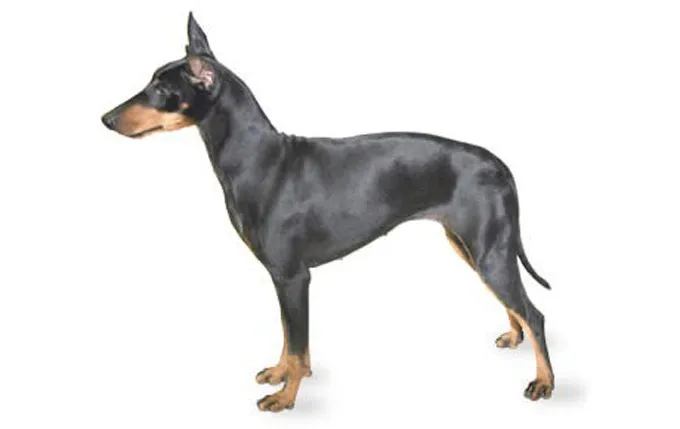
(Picture Credit: Shutterstock)
Manchester Terriers are pretty low maintenance. Brush the coat once a week with a rubber or bristle brush to get rid of dead hair and prevent matting.
They shed, although not excessively, and regular brushing keeps this under control. They blow their coat twice a year, shedding heavily every spring and fall.
If you keep them brushed, your Manchester should need a bath only when they're dirty.
-
Miniature Schnauzer
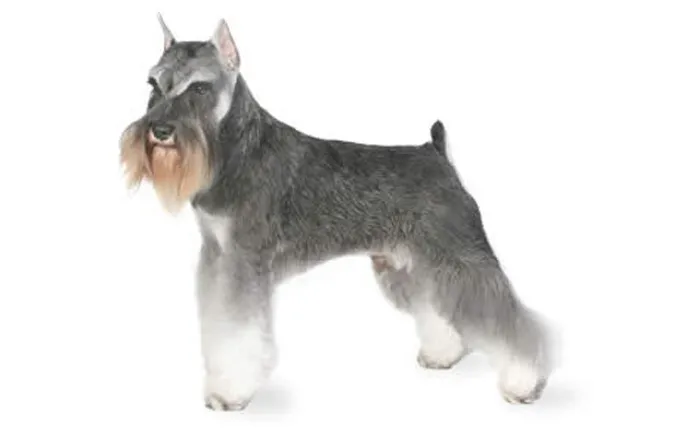
(Picture Credit: Shutterstock)
The Miniature Schnauzer has a double coat. The top coat is wiry. Since the undercoat catches the loose hair, they hardly shed at all. Because of this, many people think they're a perfect house dog, especially those who suffer from asthma.
Brush your Schnauzer two or three times a week so they don't get matted, especially in the longer hair on their face and legs. Be sure to check their armpits, since this is a place where mats often form.
-
Poodle
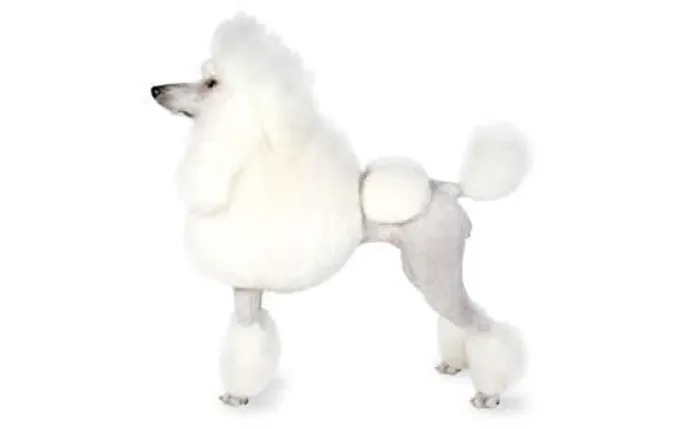
(Picture Credit: Shutterstock)
The Poodle is a non-shedding breed, and a good choice for people with allergies. Many allergic people are able to keep a Poodle with no reaction.
Grooming a Poodle isn't for the faint of heart. Poodles are high-maintenance dogs. They require regular grooming, every three to six weeks, sometimes more often, to keep the coat in good condition. If you are considering a Poodle, consider the upkeep of the coat and expense of grooming.
-
Portuguese Water Dog

(Picture Credit: Shutterstock)
The Portuguese Water Dog has two coat types: curly and wavy. Both types are a single coat, meaning there's no undercoat. That's why the Portie doesn't shed as much as some breeds and why they're often considered to be hypoallergenic.
Brush or comb your Portie two or three times a week to keep the coat tangle-free. Clip or trim the coat monthly to keep it looking neat.
-
Puli
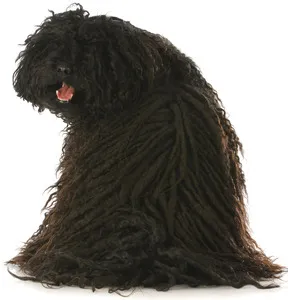
(Picture Credit: Shutterstock)
The Puli coat is considered to be nonshedding and hypoallergenic. Some Puli coats are self-cording, though most are helped along by humans who separate the cords by hand when the adult coat comes in.
The corded coat is never brushed but managed by hand: first it's dampened with water, then the cords are separated and twirled. The length of the corded coat is sometimes trimmed to keep it from collecting dust and dirt.
-
Shih Tzu
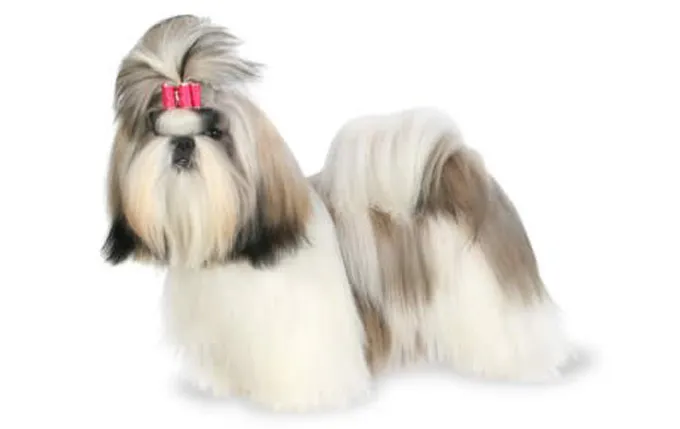
(Picture Credit: Shutterstock)
Keeping the Shih Tzu coat gorgeous is demanding. Daily brushing and combing is necessary to prevent tangles, as is frequent bathing.
When brushing, you want to make sure that you brush all the way down to the skin. Most experienced Shih Tzu groomers teach the dog to lie on their side while they brush the coat in sections; it's easier to brush that way and more comfortable for the dog.
-
Silky Terrier
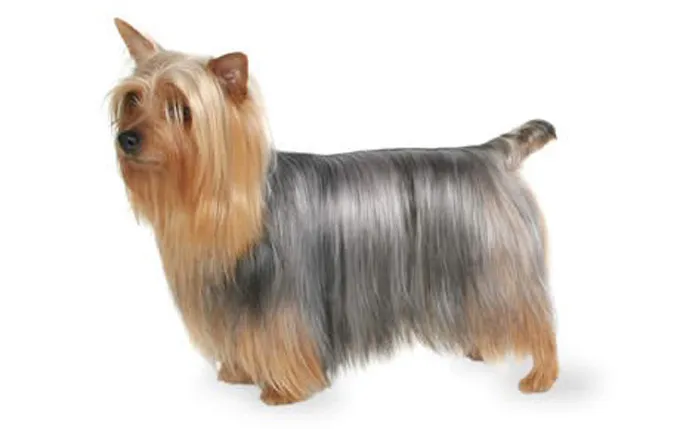
(Picture Credit: Shutterstock)
This breed's coat is beautiful: long and sleek, parted down the back, and hanging five to six inches down.
You might peg the Silky as a fussy breed, grooming-wise, but they really aren't. A thorough brushing and combing two to three times a week (and before bathtime), along with a bath every month or so will keep your Silky clean and tangle-free.
-
Welsh Terrier
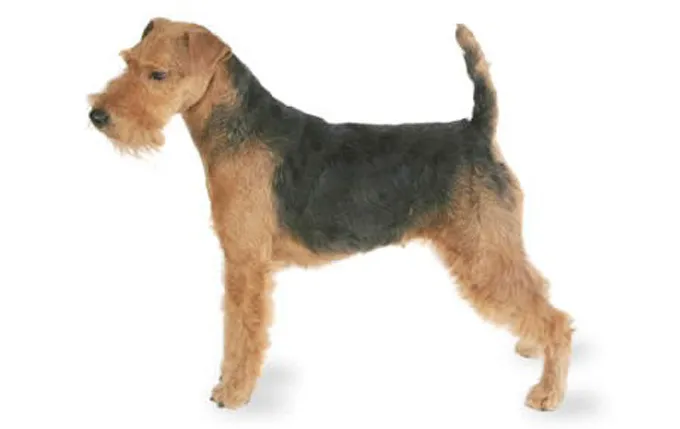
(Picture Credit: Shutterstock)
Sporting two coats to waterproof themselves, the Welsh Terrier has an outer coat that's hard and wiry and an undercoat that's soft and short.
A non- to light shedder, the Welshie still requires a fair amount of grooming. They should be brushed at least once per week, although it's frankly better to do it every other day. Unless they're clipped, that wiry coat will need to be stripped several times a year to remove any loose or dead hair and to prevent it from matting.
-
Xoloitzcuintli
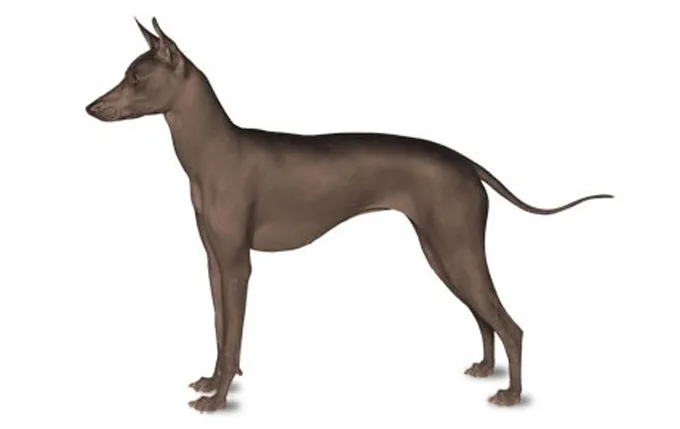
(Picture Credit: Shutterstock)
The hairless Xolo has smooth but tough skin that fits closely to their body. What little hair they have adorns the top of the head, the feet, and the last third of the tail, up to the tip. A coated Xolo is completely covered with short, smooth, close-fitting hair.
You might think that a hairless dog needs little to no grooming, but think again. It's true that Xolos often clean themselves like cats and are unlikely to get fleas, but because they sweat through their skin and paw pads, it's important to keep those areas clean.
